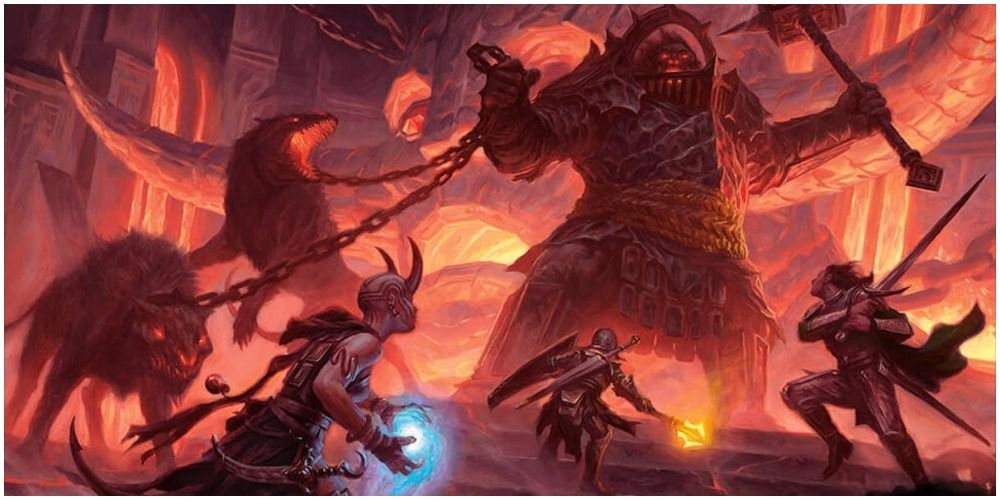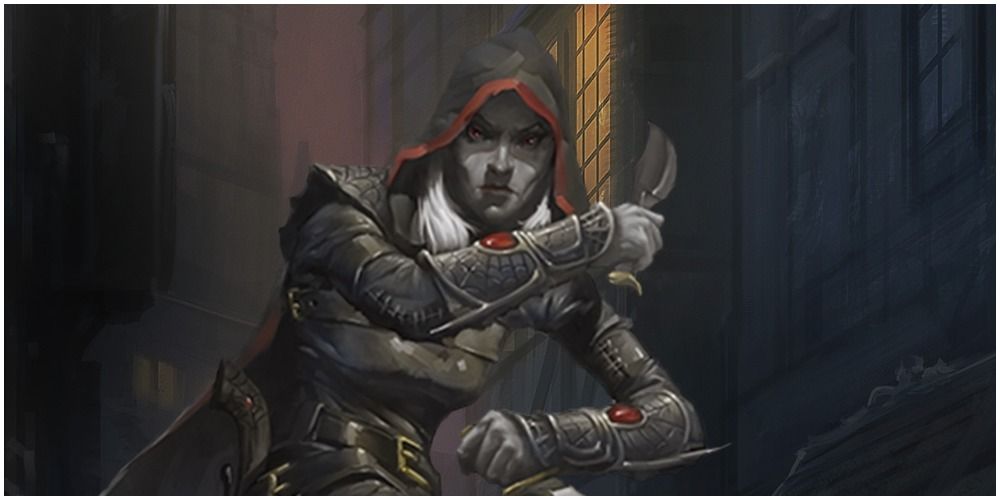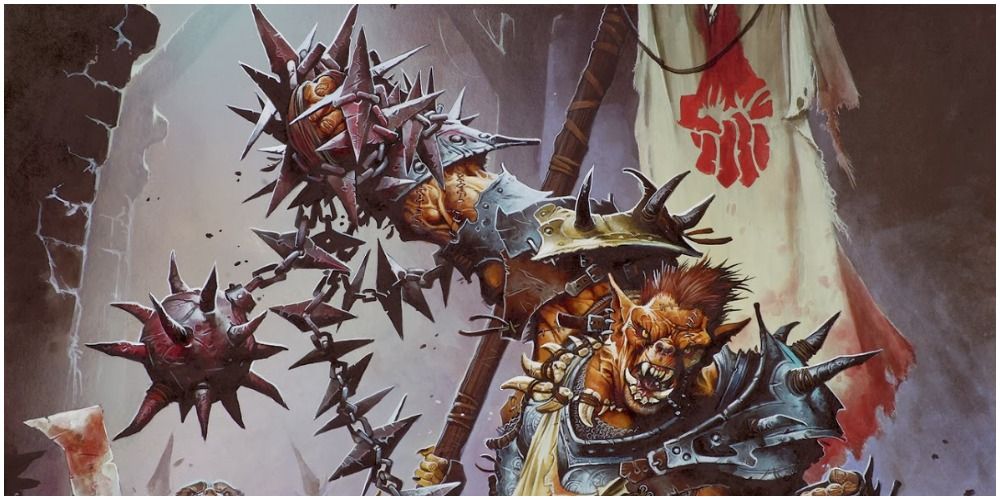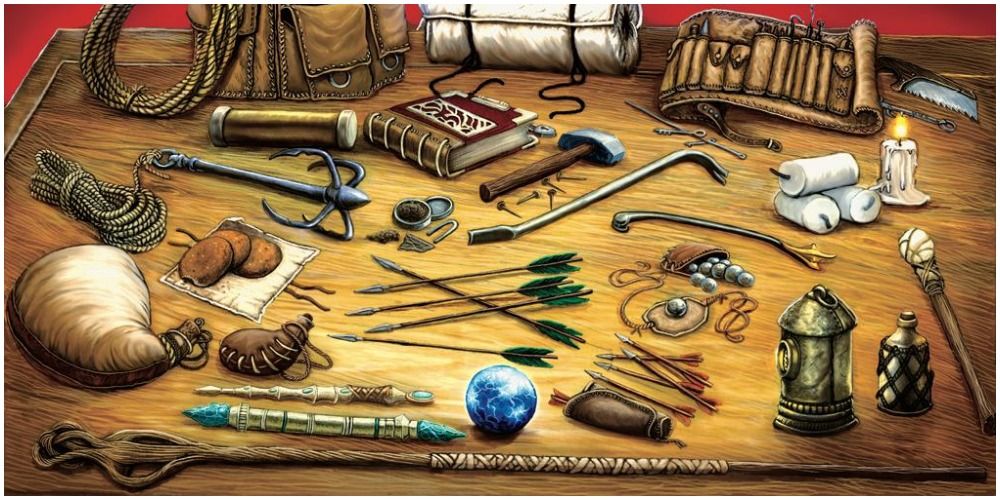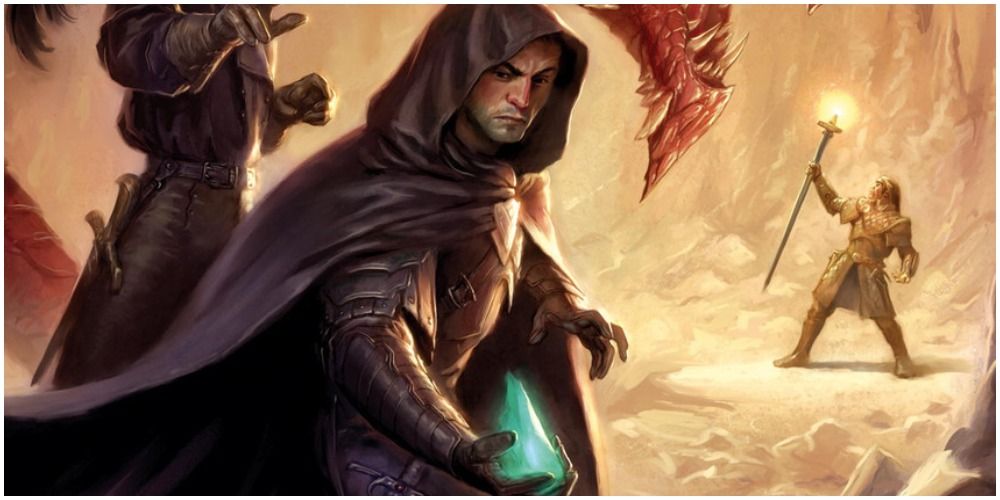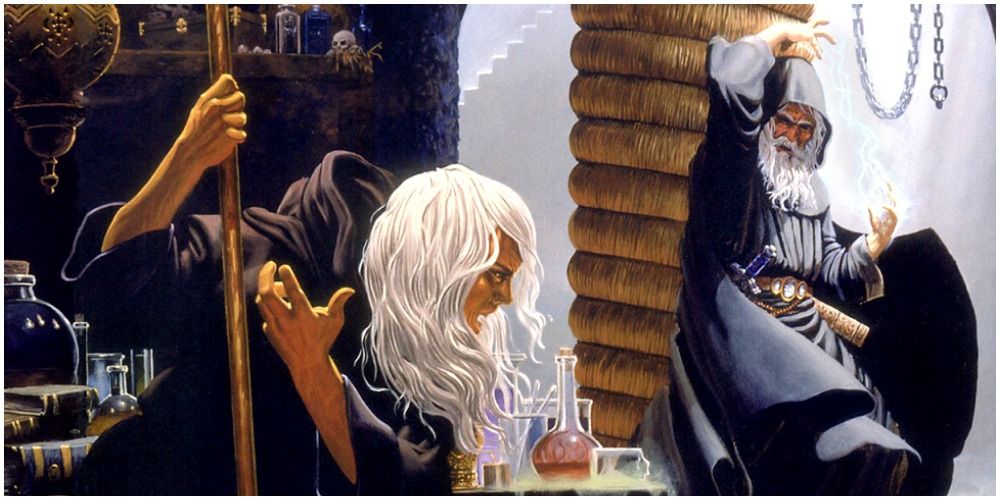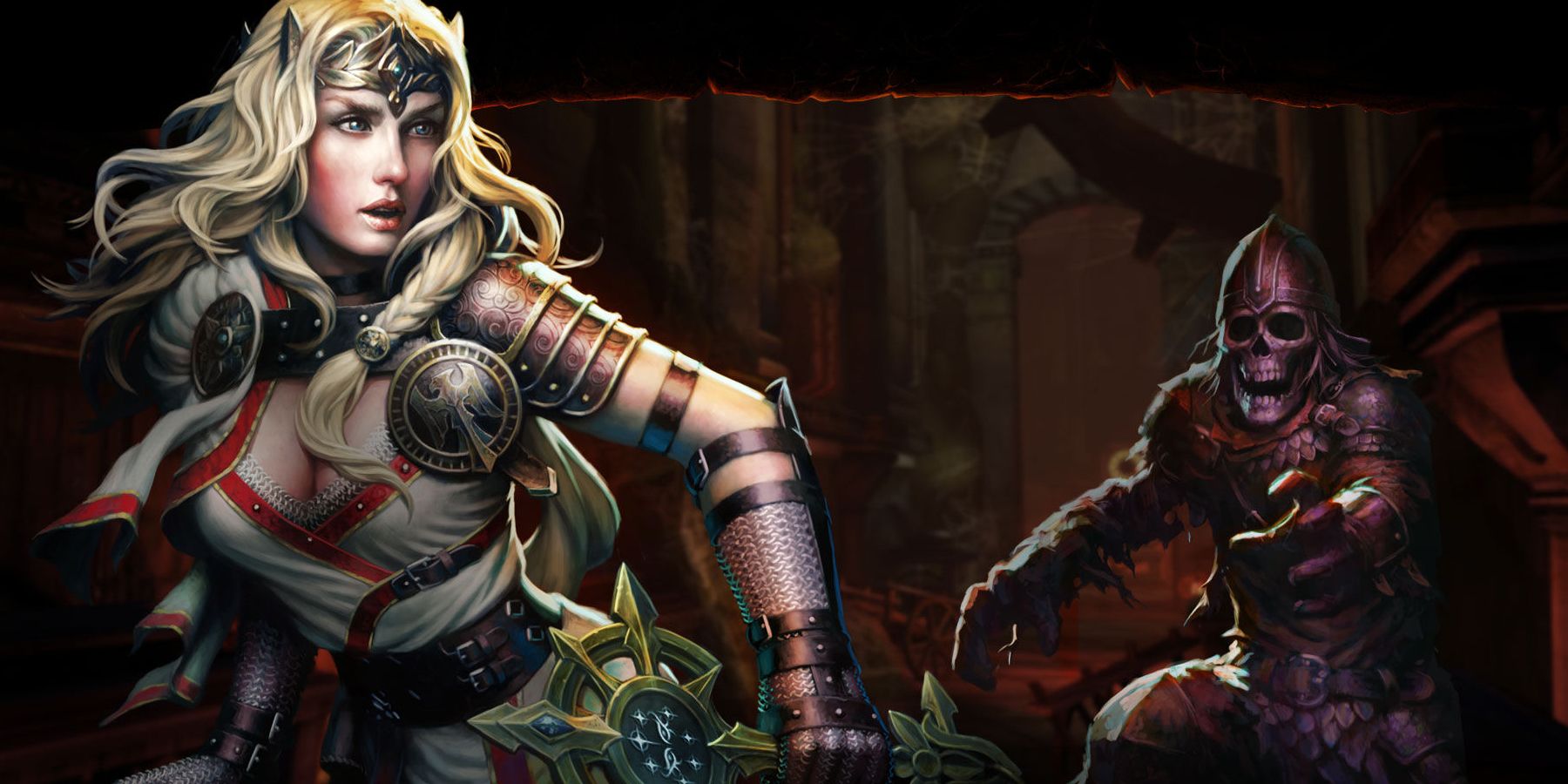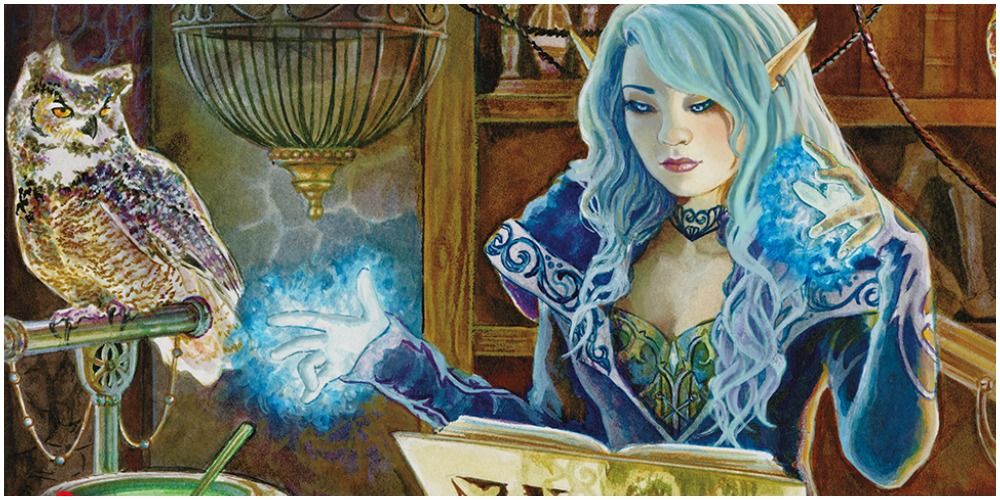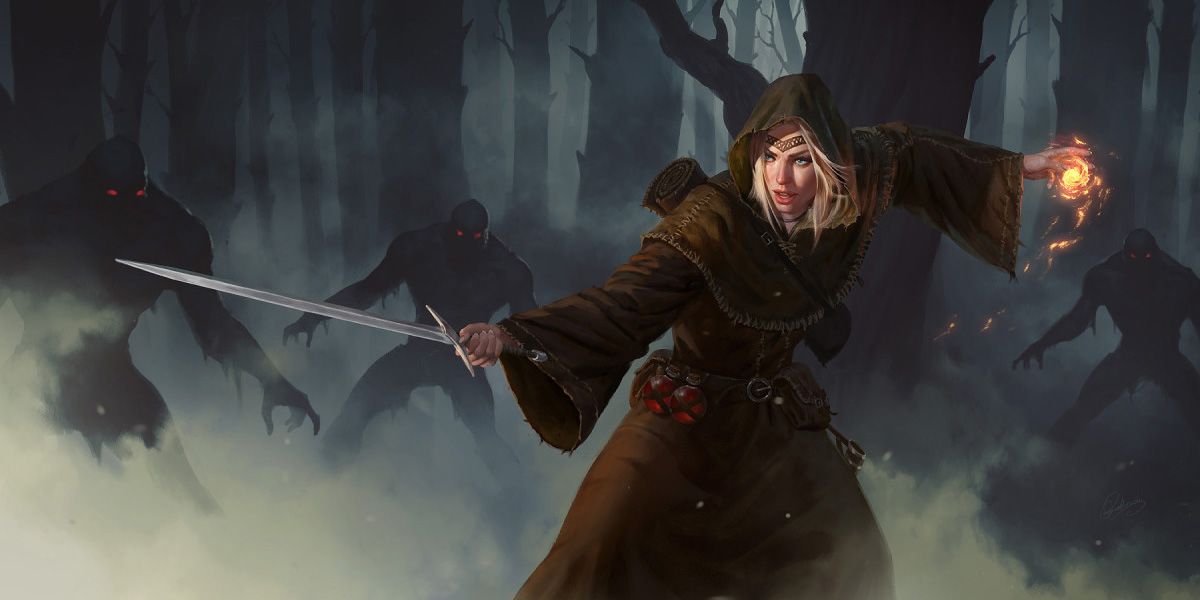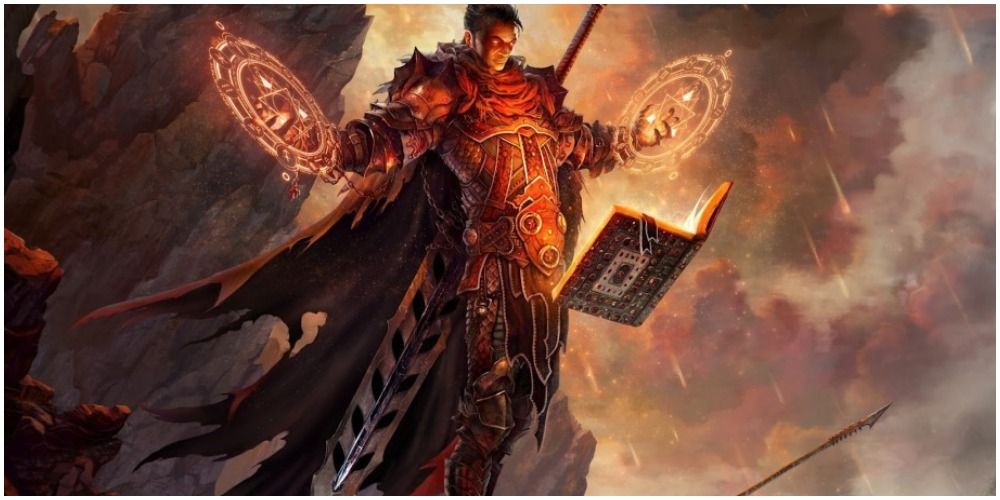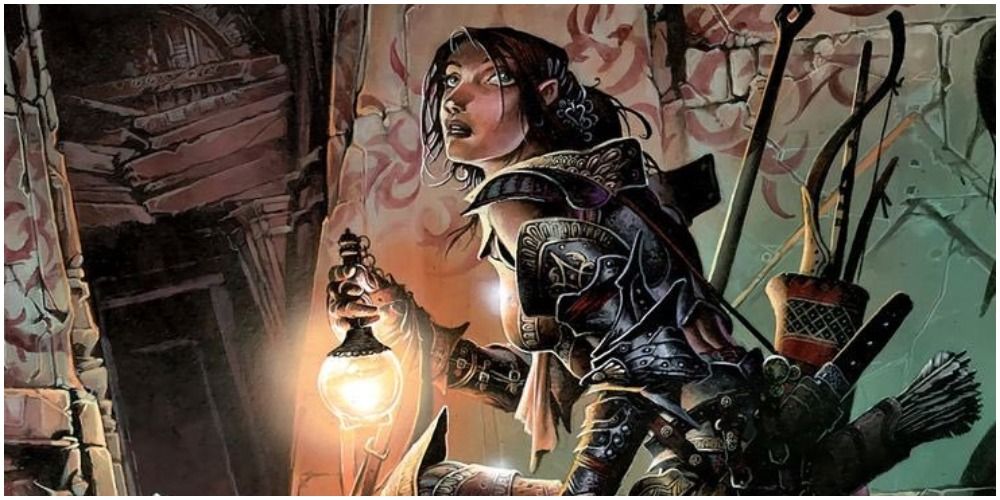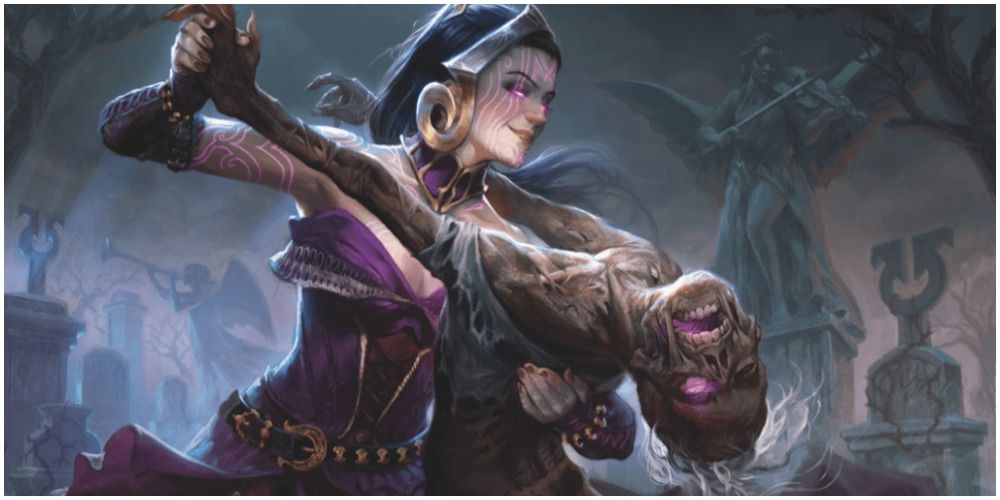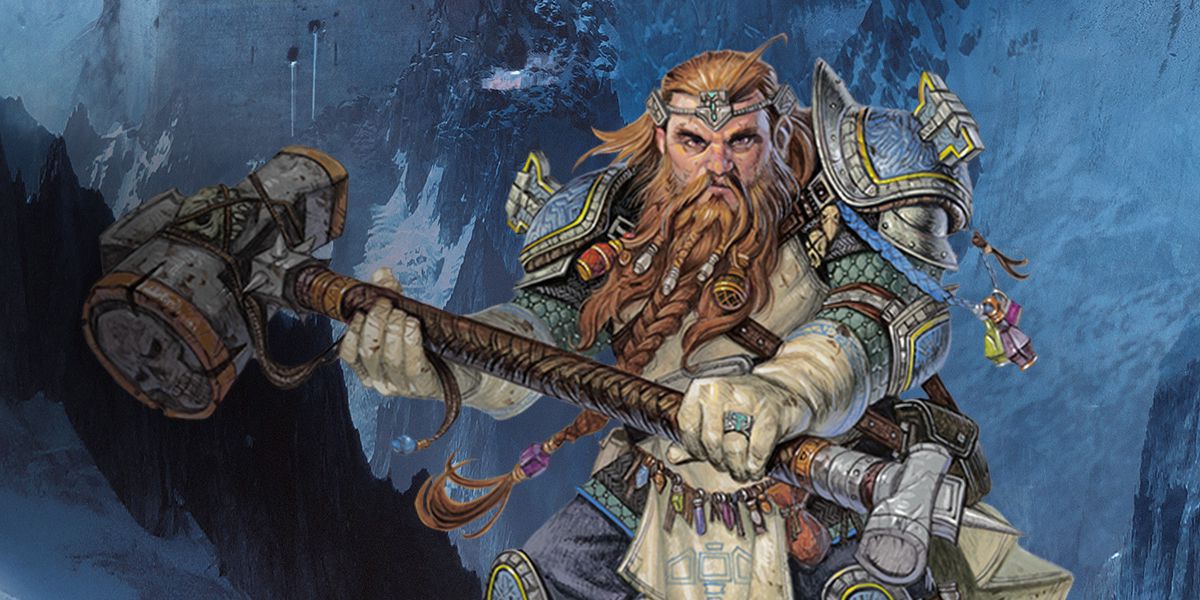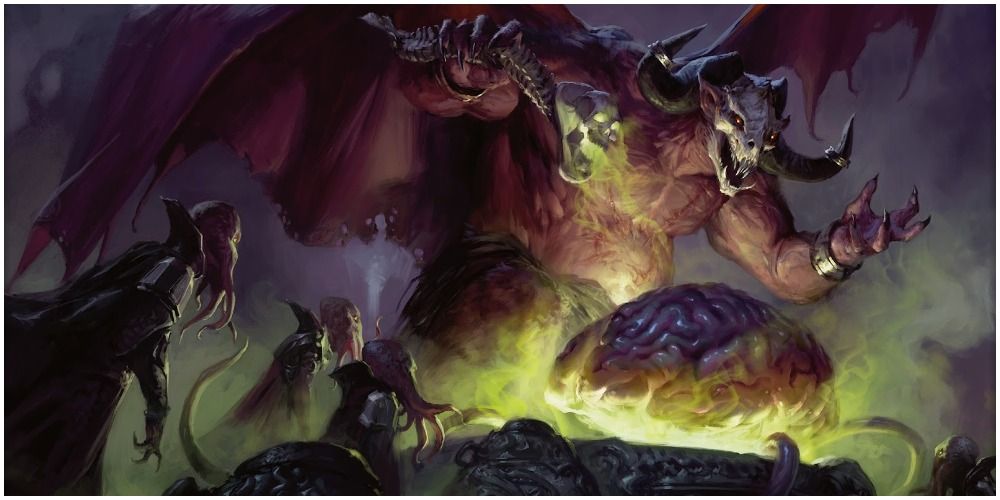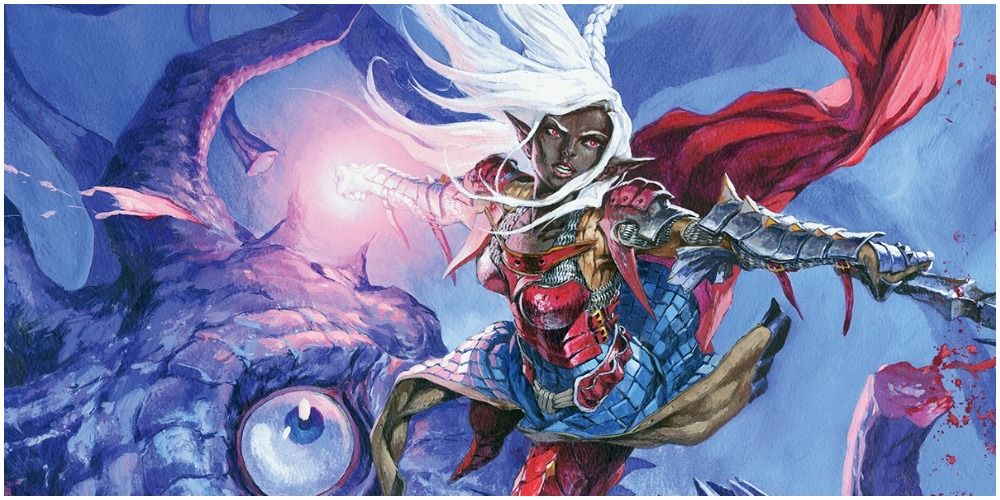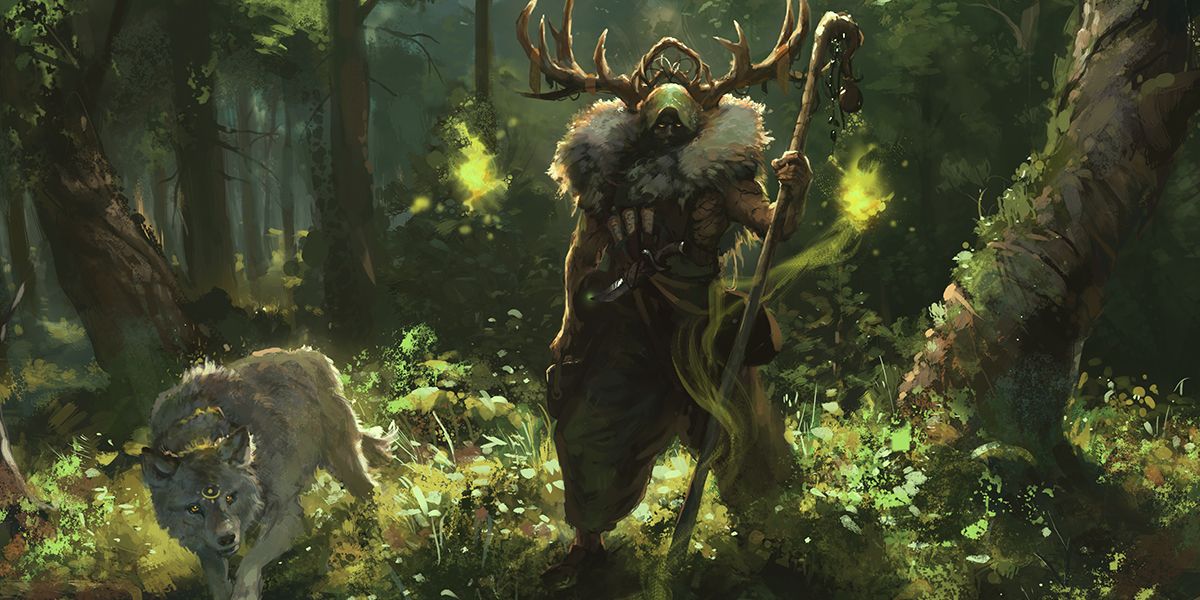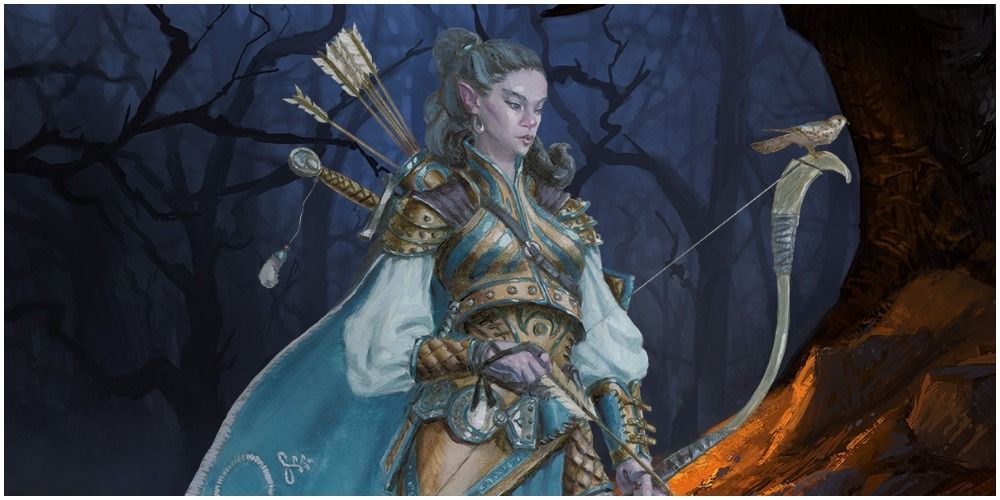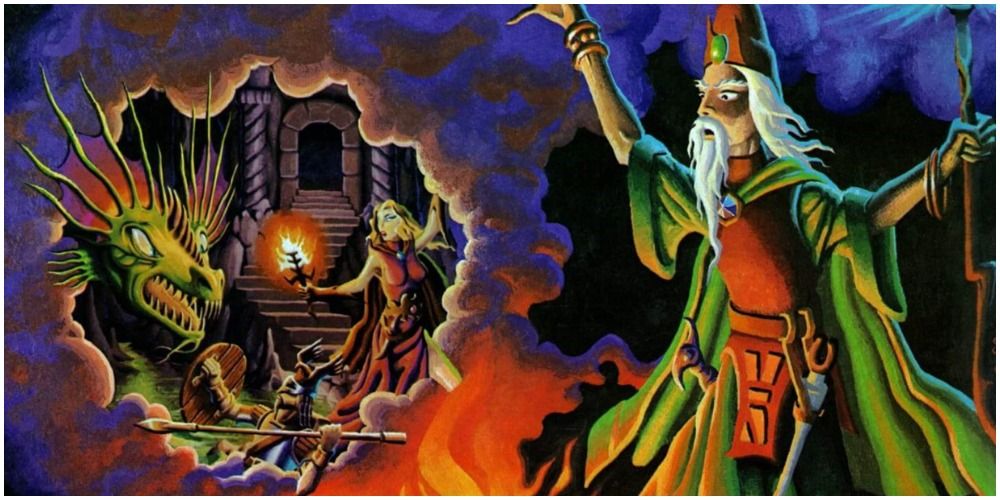Dungeons & Dragons has changed a great deal over the years. The creators of Dungeons & Dragons had no idea that it would be scrutinized in the way that it was, with every creative choice and rule picked apart by players who wanted to improve the mechanics of the game.
As time went on, some of those same players would end up on the creative staff of Dungeons & Dragons. This meant that some of the editions would be drastically different compared to their predecessors, with the jump from Advanced Dungeons & Dragons to the third edition representing the creation of an almost entirely new game.
The fans of Dungeons & Dragons are a passionate bunch when it comes to discussing the game and the changes that have been made to it. This means that some rule changes have been met with controversy from the fanbase, which has led to a backlash that has resulted in fewer people buying the game. This is what led to many of the radical changes in the fourth edition being rolled back in the fifth.
We are here today to determine which Dungeons & Dragons rules were changed for the better and which ones made the game worse - from the end of overspecialization to the removal of the rules that made monsters harder to defeat.
Here are the 10 Dungeons & Dragons Rules That Were Changed For The Better (And 10 That Became Way Worse).
Better: No More Super Specialization In Skills
One of the biggest issues with the third edition of Dungeons & Dragons was manipulating the skill system in order to make it almost impossible to fail at certain tasks. This was accomplished by min/maxing, which could be done as easily as having a single eighteen in the stat that granted a bonus to the skill and selecting a race that conferred a further +2 bonus to the stat (as well as potentially offering a bonus to the skill, like halflings with Move Silently) and then selecting a feat that further boosted the score.
The latest edition of Dungeons & Dragons replaced skill points with using the proficiency bonus, which increases at a much slower rate.
There are also fewer abilities and items that grant modifiers to skills. The changes to the skill system mean that players cannot abuse skills like Bluff and Diplomacy to try and escape the repercussions of their actions.
Worse: The Awesome Exotic Weapons Are Gone
The third edition of Dungeons & Dragons broke weapons down into different categories, such as simple (weapons that anyone could use, like a club), martial (weapons that required a degree of training, like a longsword), or exotic (weapons that required a lot of specialist training in order to be able to use effectively.)
The exotic weapons would require the player to spend a feat in order to be able to use them properly, but they offered some unique benefits that made them worthwhile, such as the reach of the spiked chain or the high critical modifier of a gnome hooked hammer. The exotic weapons were scrapped from the fifth edition and either totally removed or turned into standard weapons. This has meant that the basic weapon selection process is far less interesting than it was before.
Better: Equipment Packs Reduce The Micro-Managing Of Items
One of the most frustrating aspects of character creation in the older editions of Dungeons & Dragons was the equipment selection process. A brand new character was given a randomly determined amount of money, which they had to use to buy all of their weapons, armor, and gear, with the exception of a few freebies. Not only did this take a long time to resolve, due to players micro-managing their limited gold to purchase as much as they could, but it was also easy to forget a vital item (like a bedroll or ammunition).
The introduction of "packs" in the latest edition of Dungeons & Dragons has helped to speed up the process of selecting equipment. A brand new character now has to select from predetermined item sets, which include packs (like the Burglar's Pack or the Explorer's Pack), which contain all of the basic equipment that you would need on your adventure.
Worse: The Attunement Rules & Reduced Focus On Magic Items Makes Adventuring Less Fun
The best part of any Dungeons & Dragons game used to be the process of identifying magical items. The coins and gems you found were nice, but there were limits to what you could purchase, while magic items could increase your powers beyond what you could normally achieve.
The latest edition of Dungeons & Dragons continues the trend laid down by the fourth edition and has made magic items a less important part of the game.
You are also limited to attuning to three powerful magic items at once, which was an attempt to balance the game. The change of focus from magic items to increasing the number of abilities of each class possesses has made adventuring less enjoyable. This can be clearly seen in the official Dungeons & Dragons campaigns, where magic items are far rarer than they were in previous editions.
Better: Concentration Stops The Endless Spell Buffing
The limited spell selection of sorcerers and wizards used to have to be divvied up into different groups, with each player weighing the importance of battle spells, buffing spells, and utility spells. Spells that can confer bonuses to the party were very popular in older editions, with bull's strength, haste, and fly being some of the most widely-used.
The problem with buffing spells was that they could often make the party too powerful and the spellcasters had to dedicate a portion of their limited repertoire to them, which gave them fewer options in combat. The latest edition of Dungeons & Dragons has curbed buffing spells by requiring spellcasters to concentrate on them, which means that they can only have one in effect at any time. This means that the players can still benefit from the aid of magic, but they can't rely on several buffs to allow them to steamroll the enemy.
Worse: The Removal Of Negative Levels Has Made Deceased Creatures Less Of A Threat
The most fearsome attack that was available to the deceased in the older editions of Dungeons & Dragons was their ability to drain levels with a touch. Creatures like wights and vampires could temporarily remove your hard-earned levels with their physical attacks, which would severely weaken the character and would prevent spellcasters from using their most powerful spells.
The energy drain ability made facing certain kinds of deceased creatures in battle extremely scary. This ability has been replaced with a life drain ability that lowers the character's maximum hit points until they rest or use a spell, like greater restoration. The life drain ability is awful to be sure, but it pails in comparison to the energy drain ability. This change has made deceased creatures far less effective as enemies and the player has less to worry about when facing them.
Better: Charisma Is As Important As It Should Be
In the older editions of Dungeons & Dragons, the most useless stat was Charisma. There were only a few classes that used Charisma as a prerequisite (like the paladin) and almost no abilities were affected by a high Charisma score. The reason Charisma was ignored for so long was due to the focus on the adventuring and battling aspects of Dungeons & Dragons, which were always given more attention than the character building and roleplaying aspects of the game.
The combat focus of most Dungeons & Dragons games also meant that the physical stats were highly prized, as it wasn't possible to talk your way out of every situation.
One of the biggest changes in the third edition of Dungeons & Dragons was making Charisma more important to the game, as it was directly tied to the powers of certain classes (like the sorcerer) and affected some of the best skills in the game (like Bluff and Diplomacy).
Worse: Healing Word Has Made The Game Too Easy
The cure spells are often necessary for the survival of a party, as they can heal wounds inflicted by the enemy. The drawback of these spells was that they could only be used when touching someone, which meant that the healer would have to potentially put themselves in danger in order to jump into combat and save a wounded ally.
The fifth edition of Dungeons & Dragons has added a spell called healing word, which doesn't heal as much as the cure wounds spell, but it can be cast at a range of sixty feet and casting it is classed as a bonus action, meaning that you can take another action that turn (but any other spell you cast has to be a cantrip.) The changes to the rules regarding dropping below zero hit points have meant that the healing word spell is far more effective than cure wounds. There is considerably less risk playing as a healer in the heat of battle than in previous editions, which in turn has made battles easier.
Better: THAC0 Is Gone For Good
A lot of the rules mentioned in this article have been argued for and against by the fans - all except this one. THAC0 is an acronym, which stands for "To Hit Armor Class Zero." In most editions of Dungeons & Dragons, an attack is resolved by a player rolling a D20 and adding the relative bonuses to the result, if this result is the same or higher than the enemy's Armor Class score, then it's a hit.
In Advanced Dungeons & Dragons, a character's THAC0 score determined the number they needed to hit an Armor Class score of zero. In terms of the rules, this meant that a THAC0 of sixteen meant that you could hit an Armor Class score of one by rolling a fifteen and an Armor Class score of minus one with a seventeen. The THAC0 rules meant that you had to work out what numbers you needed to hit every Armor Class score, which most players did with the aid of a chart, which some custom made character sheets had ready to be filled in.
Worse: The Multiclassing Nerf Has Given The Players Fewer Options
A Dungeons & Dragons character isn't limited to a single profession, which means that some of them are able to take on multiple classes at the same time. These characters gain the abilities of each class, with the setback that they advance in level at a slower rate than those who focus on a single role.
The recent edition of Dungeons & Dragons has made multiclassing a less attractive prospect, due to the fact that the stat point gain that was once given every few levels is now tied to leveling up in a single class.
This means that it's far less attractive to multiclass into two classes and maintain the same progression, as they will lose the benefit of either two free stat points or a feat.
Better: The Nonsense Class Restrictions Are Gone...
One of the most bizarre design choices in Advanced Dungeons & Dragons was the race restrictions on certain classes. These meant that only humans could become paladins, only humans, elves, and half-elves could become mages and rangers, only humans and gnomes could become illusionists, and only humans and half-elves could become bards and druids.
These restrictions severely limited the class choices for dwarves, gnomes, and halflings. It also never made sense why the honor-bound dwarves couldn't become paladins, why the nature-loving elves and halflings couldn't become druids, and why the creative and musically gifted gnomes couldn't become bards. The class restrictions were lifted in the third edition of Dungeons & Dragons, except in the case of some specific prestige classes (like the dwarven defender) and the game was improved immensely, as players were given far more character options than before.
Worse: ...But The Alignment Restrictions Should Have Stayed
There were some classes in the older editions of Dungeons & Dragons that were restricted by the alignment of the character, with the most notable example being paladins, as they could only ever be lawful good and any deviation from this path would lead to them losing all of their powers.
One of the biggest missteps in the current edition of Dungeons & Dragons was removing the alignment restrictions. This means that you can technically have evil paladins (who presumably follow the Oath of Vengeance) and lawful good necromancers. In previous editions, the practice of necromancy was a one-way ticket to becoming evil, with the third edition version of animate dead even having the [Evil] descriptor. It was generally accepted that creating animated puppets from corpses was a bad thing to do, but this is no longer the case.
Better: Clerics No Longer Have Senseless Weapon Restrictions
The gods that appear in each Dungeons & Dragons setting have a favored weapon that is often used by their followers. This kind of weapon is usually what appears whenever a cleric casts the spiritual weapon spell. The gods were free to use whatever weapon they liked, but their servants weren't so lucky, as the clerics in Advanced Dungeons & Dragons were only allowed to use blunt weapons.
The reasons for this restriction were hazy, with talk of clerics not wanting to cause violence.
The problem with this restriction was that it also applied to clerics who worshiped the gods of evil and war, who were strictly forbidden from using knives or swords. The weapon restrictions on clerics were lifted in the third edition of Dungeons & Dragons, even though they often still used their deity's favored weapon.
Worse: Banishment Is Now Ridiculously Overpowered
It's not unusual for spells to change from one edition of Dungeons & Dragons to another, but banishment may have changed the most, and it wasn't necessarily for the better. In the older editions of Dungeons & Dragons, banishment was a sixth-level cleric spell and seventh-level arcane spell that could send extraplanar creatures (angels, demons, elementals) back to their home plane if they failed a saving throw and spell resistance check.
The new version of banishment was lowered to level four and it can now banish anyone to an empty demiplane for up to ten rounds. This means that a powerful boss monster is only one saving throw away from being removed from the battlefield, giving the players plenty of time to focus on their minions or set traps in preparation for the boss monster's return.
Better: The Unbalanced Level Adjustment Rules Are Gone
Dungeons & Dragons players have been wanting to play as monsters since the game was first released. The third edition of the game introduced a lot of options for monster characters, but a special rule was created to deal with balance issues. There were some monster races in Dungeons & Dragons that had previously been established as being naturally powerful, such as the spell resistance of the drow.
In order to balance out characters made from powerful monster races, they were given an Effective Character Level (or ECL) score. This meant that certain races took longer to level up in exchange for higher initial benefits. The problem with this system was that the extra racial benefits would end up being irrelevant compared to the strength offered by a new character level. This meant that party members consisting of races from the Player's Handbook would quickly outstrip their unconventional counterparts. The latest edition of Dungeons & Dragons did away with the level adjustment rules and just balanced out the monster races.
Worse: The Animal Companions Are All But Gone
The animal companions given to druids were one of their best class abilities, as it was like having a second character that didn't drain experience points from the party. Animal companions tended to be effective in combat or offered a lot of utility, such as having a bird that can act as a flying scout or a wolf that could track creatures by their scent.
The animal companion rules certainly needed to be more balanced, but the creators of the latest edition of Dungeons & Dragons went a little too far an decided to practically remove them from the game.
Druids no longer gain animal companions at all, with their archetypes being based around either gaining new spells or buffing the Wild Shape ability. The beast master ranger archetype did gain an animal companion, but it was extremely weak. The beast master had to be updated in a free update on the Dungeons & Dragons website in order to make them playable.
Better: The Monster Balance Roulette Is Gone
One of the biggest issues with Advanced Dungeons & Dragons was the fact that there was no system in place to help dungeon masters create balanced encounters for their party. The closest way to measure the relative danger of a combat encounter in the older editions of Dungeons & Dragons was through the hit dice of each creature, but this was an inexact science and could often lead to the demise of a party.
The introduction of the challenge rating rules in the third edition of Dungeons & Dragons made it a lot easier for dungeon masters to create adventures with balanced encounters. The math behind it could be fiddly to work out (especially when mixing creatures of different challenge ratings) but it was still a huge improvement over the earlier editions.
Worse: The Favored Enemy Nerf Has Severely Weakened Rangers
One of the best abilities of the ranger class was their skill in fighting specific kinds of enemy. In Advanced Dungeons & Dragons, this ability took the form of a +4 to attack rolls against a species that was determined at first level, while the rangers of the third edition of Dungeons & Dragons would select several favored enemies over the course of their career.
The fifth edition version of the ranger class removed the combat benefits from the favored enemy ability so that it now only granted advantage on tracking checks when looking for their favored enemy and Intelligence checks regarding information about them, as well as giving the ranger an additional language. The new version of the favored enemy ability meant that rangers gained no combat benefits from their class at first level. This had to be changed with the revised version of the ranger that was detailed in a free update, which gave the ranger a +2 to attack rolls against their favored enemy.
Better: The Haste Aging Rule Is No More
The haste spell is often considered to be the best spell in Dungeons & Dragons, regardless of the edition or the errata that was released to nerf it. The ability to take more actions than normal in a round is so powerful that haste would often be the first choice for an arcane caster's third level spell slot.
The version of haste that appeared in Advanced Dungeons & Dragons had a peculiar drawback that was meant to balance it out.
All of those who were affected by a haste spell would physically age a year, due to their sped-up metabolism. A human wizard may be scared of abusing the haste spell, but the other playable demihuman races had much longer lifespans. The Player's Handbook of Advanced Dungeons & Dragons said that elves could live up to 1200 years, so they would have no issue casting haste. The age increasing drawback of haste was removed in later editions of Dungeons & Dragons.
Worse: The Removal Of Traits Has Given Monsters Some Unusual Weaknesses
The third edition of Dungeons & Dragons added types to each monster, which gave them a set of traits that determined their abilities and immunities that were universal among all creatures of that type. This meant that all oozes were immune to critical hits and being flanked, while all those deceased could be healed with spells that used negative energy, like inflict light wounds.
The fifth edition of Dungeons & Dragons has done away with the universal traits and now gives monsters resistances and immunities on a case-by-case basis. The removal of traits has led to some odd decisions, with the removal of the immunity to critical hits being one of the most unusual, as it's now possible to perform a sneak attack on a big pile of ooze. You can also use psychic attacks to destroy a mindless skeleton, which means that a bard can use the vicious mockery spell to insult a skeleton so hard that it breaks into a pile of bones.
---
Are there any other Dungeons & Dragons rules that were changed for the better or worse? Let us know in the comments!

